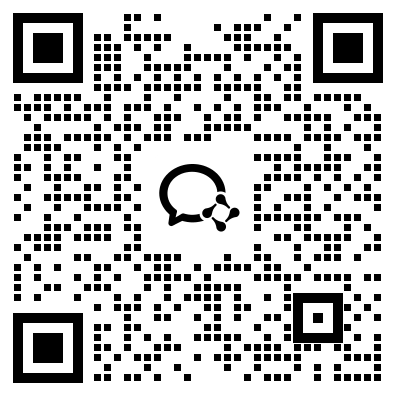特惠-26考研冲刺
特惠-27考研课
双证-在职硕士
免联考-同等学力
复试分数线
26复试全面指导
模拟复试面试
26考研-全套真题
26考研估分
保研-路线图
27考研-智能择校
27考研-英语测评
27考研-新大纲对比
热门-计算机择校

扫码加入训练营
牢记核心词
学习得礼盒
2012年英语一真题Text 3
Text 3
In the idealized version of how science is done, facts about the world are waiting to be observed and collected by objective researchers who use the scientific method to carry out their work. But in the everyday practice of science, discovery frequently follows an ambiguous and complicated route. We aim to be objective, but we cannot escape the context of our unique life experience. Prior knowledge and interest influence what we experience, what we think our experiences mean, and the subsequent actions we take. Opportunities for misinterpretation, error, and self-deception abound.
Consequently, discovery claims should be thought of as protoscience. Similar to newly staked mining claims, they are full of potential. But it takes collective scrutiny and acceptance to transform a discovery claim into a mature discovery. This is the credibility process, through which the individual researcher’s me, here, now becomes the community’s anyone, anywhere, anytime. Objective knowledge is the goal, not the starting point.
Once a discovery claim becomes public, the discoverer receives intellectual credit. But, unlike with mining claims, the community takes control of what happens next. Within the complex social structure of the scientific community, researchers make discoveries; editors and reviewers act as gatekeepers by controlling the publication process; other scientists use the new finding to suit their own purposes; and finally, the public (including other scientists) receives the new discovery and possibly accompanying technology. As a discovery claim works it through the community, the interaction and confrontation between shared and competing beliefs about the science and the technology involved transforms an individual’s discovery claim into the community’s credible discovery.
Two paradoxes exist throughout this credibility process. First, scientific work tends to focus on some aspect of prevailing Knowledge that is viewed as incomplete or incorrect. Little reward accompanies duplication and confirmation of what is already known and believed. The goal is new-search, not re-search. Not surprisingly, newly published discovery claims and credible discoveries that appear to be important and convincing will always be open to challenge and potential modification or refutation by future researchers. Second, novelty itself frequently provokes disbelief. Nobel Laureate and physiologist Albert Azent-Gyorgyi once described discovery as “seeing what everybody has seen and thinking what nobody has thought.” But thinking what nobody else has thought and telling others what they have missed may not change their views. Sometimes years are required for truly novel discovery claims to be accepted and appreciated.
In the end, credibility “happens” to a discovery claim – a process that corresponds to what philosopher Annette Baier has described as the commons of the mind. “We reason together, challenge, revise, and complete each other’s reasoning and each other’s conceptions of reason.”
31. According to the first paragraph, the process of discovery is characterized by its
[A] uncertainty and complexity.
[B] misconception and deceptiveness.
[C] logicality and objectivity.
[D] systematicness and regularity.
32. It can be inferred from Paragraph 2 that credibility process requires
[A] strict inspection.
[B]shared efforts.
[C] individual wisdom.
[D]persistent innovation.
33.Paragraph 3 shows that a discovery claim becomes credible after it
[A] has attracted the attention of the general public.
[B]has been examined by the scientific community.
[C] has received recognition from editors and reviewers.
[D]has been frequently quoted by peer scientists.
34. Albert Szent-Györgyi would most likely agree that
[A] scientific claims will survive challenges.
[B]discoveries today inspire future research.
[C] efforts to make discoveries are justified.
[D]scientific work calls for a critical mind.
35.Which of the following would be the best title of the test?
[A] Novelty as an Engine of Scientific Development.
[B]Collective Scrutiny in Scientific Discovery.
[C] Evolution of Credibility in Doing Science.
[D]Challenge to Credibility at the Gate to Science.
答案参考
21. B 22. C 23. D 24. A 25. A
36.A 37. D 38. C 39. B 40. A
36.C 37.D 38.A 39.D 40.B
31.A 32.D 33.B 34.D 35.D
 推荐阅读
推荐阅读
2017 年 12 月 27 日,瞿江桓以笔试分 56 5,面试分 83 02,合计总分 139 52 排名第一入围体检。 此后,瞿江桓等待体检通
来源 : 上游新闻 2020-07-20 10:41:19 关键字 : 九江事业单位招考总分第1名无缘体检
7月19日0—24时,31个省(自治区、直辖市)和新疆生产建设兵团报告新增确诊病例22例,其中境外输入病例5例(四川3例,内蒙古1例,山东1例)
来源 : 国家卫生健康委网站 2020-07-20 10:22:47 关键字 : 31省新增确诊22例 本土17例
新疆维吾尔自治区卫生健康委最新通报,7月16日0时至17日12时,新疆维吾尔自治区(含新疆生产建设兵团)报告新增新冠肺炎确诊病例5例、无
来源 : 天山网 2020-07-17 15:12:21 关键字 : 新疆新增新冠肺炎确诊病例5例
河北省武强县天平沟近日发现了震旦鸦雀,震旦鸦雀是中国特有的珍稀鸟种,被称为"鸟中熊猫",古印度称华夏大地为"震旦"。这种鸟的第一个
来源 : 文胜武强 2020-07-17 11:55:36 关键字 : 河北武强发现震旦鸦雀
6月以来,长江流域降雨量410 4毫米,较常年同期偏多48 3%,为1961年以来历史同期最多。 未来4天有新一轮强降雨 中央气象台台长王
截止7月16日0—24时,新冠肺炎在我国31个省(自治区、直辖市)和新疆生产建设兵团报告新增确诊病例10例,其中境外输入病例9例(广东4例,
来源 : 中国新闻网 2020-07-17 10:30:56 关键字 : 31省份新增10例确诊 1例为本土病例
天山网讯7月15日,乌鲁木齐市天山区发现新冠肺炎确诊病例1例,无症状感染者3例(均在医学观察中)。 主要情况通报如下: 确诊病例
来源 : 乌鲁木齐广电融媒体 2020-07-16 15:03:21 关键字 : 新疆新增1例新冠肺炎确诊病例
近期,中科院合肥物质科学研究院多名科研人员集体出走,其中大多数是博士毕业,并拥有事业编制。这在中科院系统内引起广泛关注。 中
来源 : 中国经营报 2020-07-16 15:00:30 关键字 : 中科院合肥研究院近百人集体辞职
据国家电影局官网消息,16日,国家电影局关于在疫情防控常态化条件下有序推进电影院恢复开放的通知发布。各省、自治区、直辖市电影主管部门
来源 : 国家电影局官网 2020-07-16 14:03:54 关键字 : 低风险地区电影院7月20日恢复营业
据云南卫健委消息,近期,国家有关部门通报了从3批自厄瓜多尔进口的冻南美白虾集装箱内壁和外包装样本中检出新冠病毒核酸阳性的情况,
来源 : 界面新闻 2020-07-16 11:40:27 关键字 : 云南进口冻南美白虾包装检出新冠
